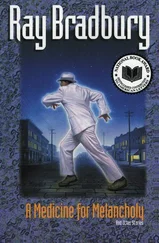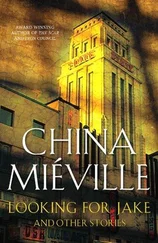Professor Ferguson loved to discuss these things over lunch. Tall, balding, white as the tablecloth where we set our beers, Santiago Ferguson spent the meal railing vainly against the destruction of the oldest city in the New World. Not the oldest dead city (Machu Picchu, Teotihuacan, Tula), but a city that’s still alive, and has been since 1325—Mexico.
It’s alive, you know, says Don Santiago, in spite of itself and in spite of its inhabitants: we have each, every one of us, tried to kill it.
Seen from the air, it’s a valley seven thousand feet above sea level, surrounded by lofty mountains that trap the exhaust vomited from cars and factories under a layer of frozen air, and we’ve added a new mountain range, surrounding ourselves with smoldering piles of garbage. And on this early afternoon in a typically rainy August we leap across holes as big as canyons, open sewers, protruding steel reinforcing rods, broken pavement, and huge puddles, amid the excavations and the shattered glass between San Juan de Letrán and Azueta, remembering something Professor Ferguson said:
— Mexico has ruins. The United States has garbage.
Then, we said, we’re growing more alike every day. But he replied that we must lose no time in freeing ourselves from garbage, cement, glass boxes, architecture that is not our own.
What we must do, immediately — he said — is see the modern as a ruin. That’s what it would take to make it perfect, like Monte Albán or Uxmal. The ruin is architecture’s eternity — he went on, this excitable, fast-talking, opinionated, wildly imaginative, affectionate, genial son of the open hearts and open arms of Glasgow. He said this between his last bite of red snapper stuffed with olives and his first taste of a rum-soaked cake: Professor Ferguson, the restorer, for us, of the wall as the fundamental principle of architecture.
He said that if Indians used the wall to separate the sacred from the profane, Spanish conquistadors to separate the conqueror from the conquered, and modern citizens the rich from the poor, the Mexican of the future should use the wall again (opposing it to glass, concrete, and artificial verticality) as an invitation to move freely about, leave and enter, flow along its horizontal lines. Arches, porticoes, patios, open spaces, extended by walls of blue, red, and yellow; a fountain, a canal, an aqueduct; a return to the shelter of the convent, to the solitude that is as indispensable to art as it is to knowledge itself; a return to the water we obliterated in what used to be a city of lakes, the Venice of the New World.
His voice and gestures grew more impassioned and we all were silent and listened, gratefully, respectfully. We Mexicans love utopias, which, like chivalric love, can never be consummated, so they are all the more intense and enduring. Ferguson’s vision of horizontal spaces — walls and water, arcades and patios — had only been achieved in a few houses in certain outlying districts, which he had wanted to keep pristine, private, but which were ultimately absorbed by the vast, spreading urban gangrene.
Sometimes, resigning himself, he could admit that eventually the walls would grow tired, so that even the air could pass through them.
But that’s all right — he would add, regaining his momentum — because it means that architecture will have fulfilled its original function, which was to serve as refuge.
Even though its pretext might be religious? (He spoke, but we also spoke about him; he was a teacher who became the subject of the students he taught.)
There has never been a civilization that hasn’t needed to establish a sacred center, a point of orientation, a place of refuge, from the pyramids of Malinalco to Rockefeller Center, replied Santiago Ferguson; for him, what was important was to distinguish a structure that was not visible at first (to the naked eye), a structure whose spirit would signify to him the unity of architecture, the building of buildings.
His thought (we students said) was part of his incessant search, his effort to find the point at which a single architectonic space, even if it doesn’t contain every space, symbolizes them all. But this ideal, because it was unattainable, at least led us toward its approximation. And that was the essence of the art.
We discussed this among ourselves and decided that perhaps the ideal of the architect was to affirm as far as possible our right to live in the spaces that most resemble our dreams, but also to recognize the impossibility of achieving that. Perhaps our teacher was telling us that in art a project and its realization, a blueprint and the construction itself, can never correspond perfectly; the lesson we learned from him was that there is no perfection, only approximation, and that’s the way it should be, because the day a project and its realization coincide exactly, point by point, it will no longer be possible to design anything: at the sight of perfection — we said to him, he said to us — art dies, exhausted by its victory. There has to be a minimal separation, an indispensable divorce between idea and action, between word and thing, between blueprint and building, so that art can continue to attempt the impossible, the absolute unattainable aesthetic.
So — our teacher smiles — always remember the story of the Chinese architect who, when the Emperor scolded him, disappeared through the door he’d drawn on his blueprint.
We caught Ferguson’s determination from him and we shared his dreams, all of us, his former students, now almost forty years old, gathered around him in this restaurant, with its gleaming wood and copper, spicy with the sharp smells of garlic, oil, and fresh greens, but for us those dreams took a path that nobody else, not even the professor himself, knew: at the end of his porticoes, patios, passages, and monastic walls lay the secret source of water, not vaulted but serpentine, where the moisture surging from the earth and the moisture falling from the sky join the fluids of the human body and together are reduced to steam. Catarina Ferguson in the arms of a man who had his back to us while she, her eyes shut in pleasure, raised her rapt face to her two youthful admirers, confused, cautious, and, finally, discreet.
We carried that dream with us always; we believed it was our teacher’s compensation for the melancholy burden of the imperfection of things, which, no matter how beautiful they might be, are created to be used up, to grow old, to die; but a few weeks later Ferguson said to us:
— Catarina is getting married two months from now. Why not do me a favor, boys? Go shopping with her. I know her, she won’t be able to carry everything. You have a van. Don’t let her get too carried away, keep an eye on her, take care of her for me, all right, boys?
4
Ferguson knew our father, an architect like us, and he told us that as time went by, we would look more and more like “the old man,” until we couldn’t anymore, since he had died at fifty-two. But that was enough of a life, said our teacher, to establish comparisons between father and sons. The Vélezes, he said, would all end up looking alike, the same high forehead, dark complexion, thick lips, narrow nose, deep furrows running down the cheeks, glossy black hair, which later turned gray, so much so that our father, with his skin as dark as a Moor’s and his snow-white hair, got the nickname “The Negative.” But, and we laughed, we didn’t yet deserve such a nickname.
— And that restless, darting Adam’s apple that bounced like a bobber, like a bobbing ball — the professor laughed — like the virile hook from which your own restless bodies hang, bodies almost as metallic as the twisted rack of rusty iron that is our city, wired bodies, hanging and, well, hung, Adamic and Edenic — joked the professor — strung-out bodies that rise up like kites and soar like comets, like Giacomettis, yes, heavenly bodies at high velocity, the velocitous, preposterous, felicitous Vélezes! He laughed again.
Читать дальше












